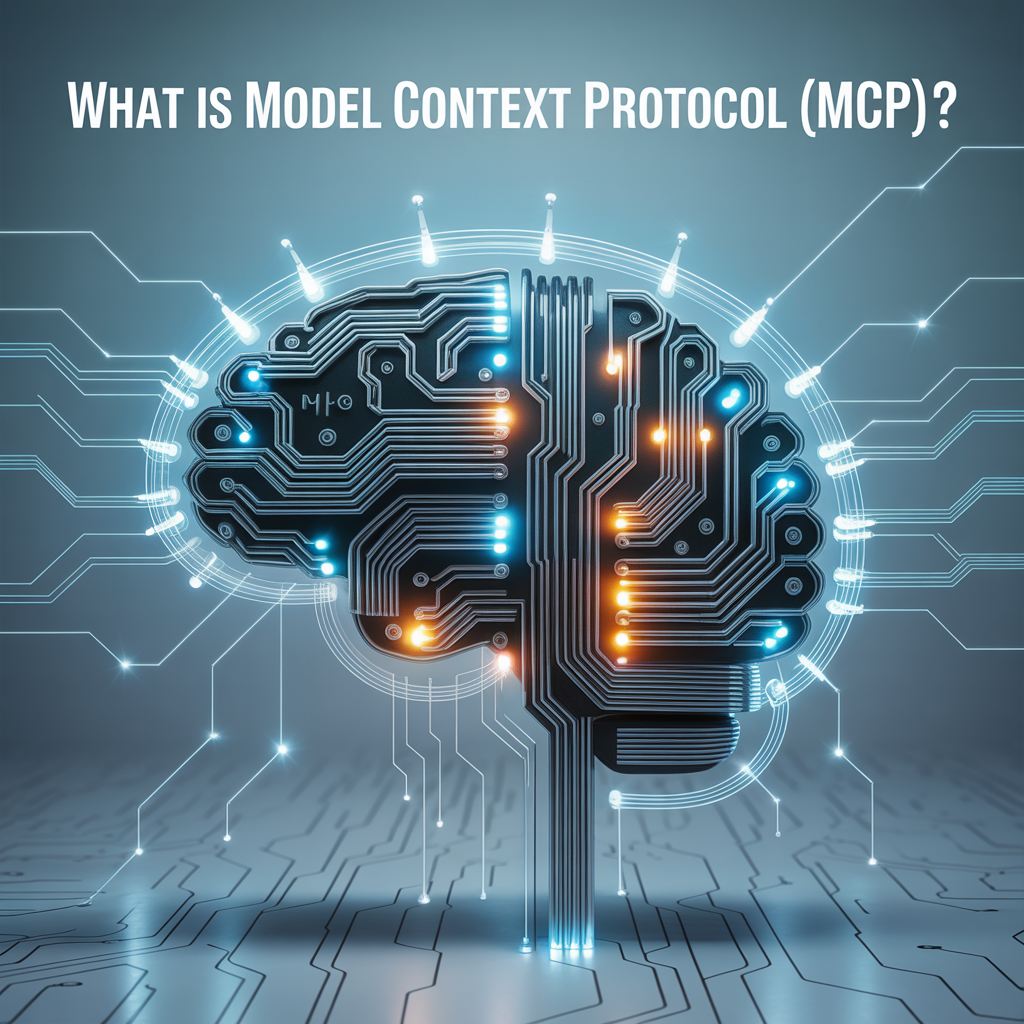In 2025, Artificial Intelligence is everywhere. From chatbots to code generators, AI tools are helping us work faster and smarter. But have you ever wondered how these AI tools get the right data, instructions, or “context” to work properly?
That’s where something new comes in: the Model Context Protocol (MCP). It’s being called the “glue” of modern AI workflows. But what exactly is MCP? Why is it needed? Should you, as a developer, care?
In this blog, I’ll explain everything from scratch so even beginners can understand what MCP is and why it’s important for the future of AI development.
What is “Context” in AI?
Let’s first understand context. Imagine you ask an AI chatbot:
“How’s the weather today?”
Without context, the AI doesn’t know:
-
Your location
-
Your language preference
-
Whether you want temperature or forecast
In simple terms, context means background information the AI needs to give a correct and useful answer.
In the case of AI tools working with businesses:
-
APIs
-
Databases
-
Company rules
-
Customer data
All these are part of the context that the AI should know before doing its task.
So, What is Model Context Protocol (MCP)?
Now, AI models (like ChatGPT, Copilot, etc.) are getting smarter, but giving them the right context in the correct format is still a big challenge.
That’s why OpenAI, Meta, Google, and other big tech companies together created MCP (Model Context Protocol) in March 2025.
In simple words:
MCP is an open standard that defines how to securely send data, rules, and tasks (context) to AI models in a consistent way.
Think of MCP like a common language or protocol that:
-
Connects your AI model to your APIs, databases, and tools.
-
Delivers the right information as context.
-
Makes sure AI knows exactly how to behave in different situations.
Why Was MCP Created?
Before MCP, every company used its own ways to give data to AI:
-
Custom APIs
-
Proprietary SDKs
-
Random data formats
This caused:
-
Security risks (data leakage)
-
Confusion for developers
-
Slow AI adoption in big organizations
MCP solves this by offering:
-
A unified, open standard (anyone can use).
-
Strong security features.
-
Support for both cloud and local AI models.
How Does MCP Work? (Simple Example)
Let’s say you have an AI chatbot helping customers in your e-commerce business. Using MCP:
-
Your API sends customer order history as structured context to the AI model.
-
MCP packages this data in a standard format with security rules.
-
Your AI model receives this context package.
-
AI uses the context to answer customer questions like:
“Where is my last order?”
MCP ensures:
-
AI only gets the data it needs.
-
No personal information is leaked.
-
Data is structured in a format the model can easily use.
Why MCP Matters for Developers
If you’re a developer, here’s why learning about MCP is important:
-
You’ll be able to connect AI models to your existing APIs and databases easily.
-
It helps your AI agents understand your business workflows better.
-
You can build agentic AI systems (smart AI teammates) that act, not just chat.
-
Security and privacy become easier to manage.
Is MCP Hard to Learn?
Not at all! MCP works behind the scenes using JSON-like structures. You don’t need deep AI knowledge.
Think of MCP as similar to:
-
REST APIs (but for AI context delivery).
-
OAuth (but for secure AI communication).
Learning MCP mainly involves:
-
Understanding how to package context data.
-
Knowing where your AI models need that context.
-
Using MCP libraries (coming soon to languages like Python and JavaScript).
Conclusion: Is MCP the Future?
Yes! In July 2025, MCP adoption is growing fast. Top companies are using it to build smarter, more secure AI-powered systems.
As AI models become agentic (able to plan and act), giving them structured context through MCP will be essential.
If you’re a beginner or working in tech:
-
Keep an eye on Model Context Protocol (MCP).
-
Learn how to work with it (soon it’ll be part of many AI SDKs).
-
Understand how your APIs and data can power your own AI solutions.
Because in the near future, AI without the right context will be like a computer without input.

Comments
Post a Comment